That Look
A wildlife photographer captures the ineffable wonder of the natural world, face to face, eye to eye.
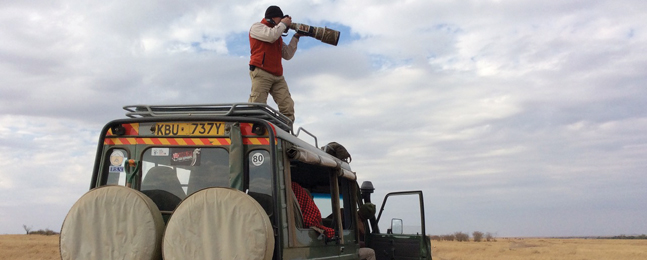
Courtesy Mark Seth Lender
Looking through a Canon 500mm lens, Lender stands on the roof of an overland vehicle in Kenya’s Maasai Mara in the early morning, searching for lions.
by Mark Seth Lender ’71, MA’74
The images reprinted here are plucked from photographic series that will appear in my first book of photography, “The Decisive Sequence.” A companion book of written work, “Cardinal Points: True Stories of the Natural World,” is also nearing completion.
I began taking photographs of wildlife for the sake of my writing, to record in detail what I otherwise would have missed. I didn’t just want to freeze the moment. If there is a vital component to my work, it is knowing what happened before and what happens next in the unfolding of behavior and events.
Series of photographs let you see that. When we look at photographs, paying attention is the hardest part. Surprisingly, perhaps, the same holds true for the photographer.
When you photograph wildlife, it’s demanding (if not daunting) to pay attention in the right way.
But the invitation to really look comes from the ineffable wonder of the natural world. I try to compose images the viewer will want to see, to create an image that will persist like an afterglow in the mind — something that is, in a word, beautiful. The iridescent plumage of the hummingbird and the freeze frame of his furiously beating wings. Zebras shown in black-and-white tones that echo their quintessential stripes. The perfect match of two young elk in combat, each a mirror image of the other.
Beyond all this beauty is something so deep yet so apparent we often take it for granted. Just as we look at them, every animal shown here looks at us, and with great interest. The photograph of the polar bear shows this most obviously. She was as captivated by me as I was by her; what you see on her face is fascination. One zebra is looking straight at me. So is the hummingbird, which is why he paused just as he did. And the lion — though her look is the opposite of an invite, she looks not at my hands or feet or what I carry, but at my face.
Evidence of a deeper connection of the most important kind.
Mark Seth Lender is a producer for wildlife content and the explorer-in-residence at “Living on Earth,” an environmental news magazine nationally broadcast on Public Radio. With wife Valerie Pettis, he created the children’s picture book “Smeagull the Seagull: A True Story” and the website Smeagull’s Guide to Wildlife (smeagullsguide.org). For more information on his work, contact him at MSL@MarkSethLender.com.
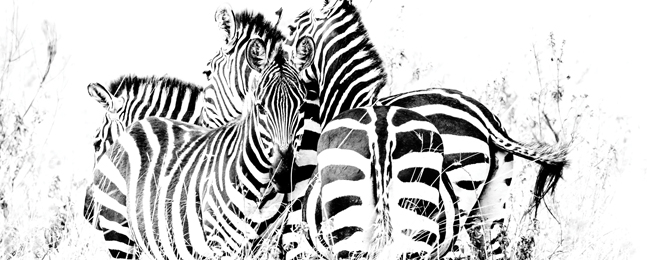
Mark Seth Lender
page 2 of 10
Horses of a Different Color
(Zebras, Maasai Mara, Kenya)
I’ve never been convinced of the efficacy of stripes. A single zebra stands out like a neon sign. Then I shot a series of frames of the small, tight group shown here. As the zebras changed positions, the frames revealed an accelerating confusion. Wherein lies the point: Zebra stripes work when many zebras are in motion. Where does one animal stop and another begin? How many are there? Are we looking at anterior or posterior? What’s the direction of movement? All the answers are obscured, and lions won’t launch themselves into an unknown midst. In the mélange of stripes, zebras earn herd immunity of the literal kind.
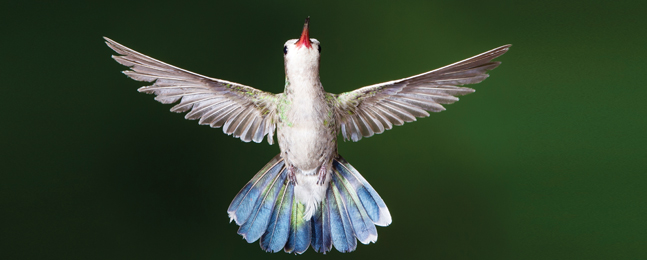
Mark Seth Lender
page 3 of 10
Magnetic
(Broad-Billed Hummingbird, Madera Canyon, Arizona)
The bright colors of a male hummingbird are meant to attract a significant other. The side effect of this for humans is beauty. Beauty fills the natural world with light. It draws us like a lodestone. Absent the creatures who dwell in nature — and we are heading rapidly in that direction — beauty will cease to exist. Without nature’s yardstick, we won’t be able to tell the difference between what is beautiful and what is ugly or vile.
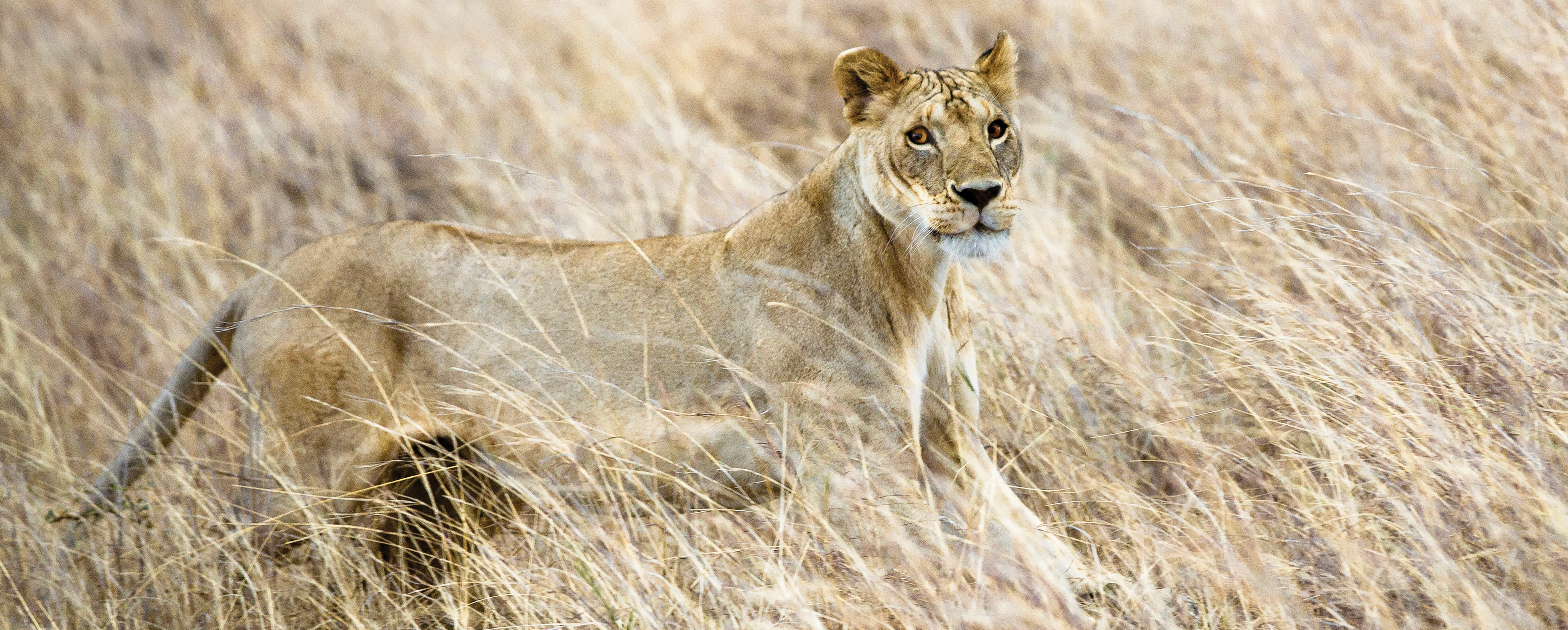
Mark Seth Lender
page 4 of 10
Do Not Disturb
(Lion, Maasai Mara, Kenya)
The look this lion shot me — that furled brow, that concentrated stare — is a warning: I’m working. A few minutes later, she and her sister, well-practiced hunting partners, made a kill. Many cues passed between them, subtle to the point of imperceptibility. Her message to me was also of that order of fineness, and she sent it to me with the assurance it would be read. Animals assume we are like them.
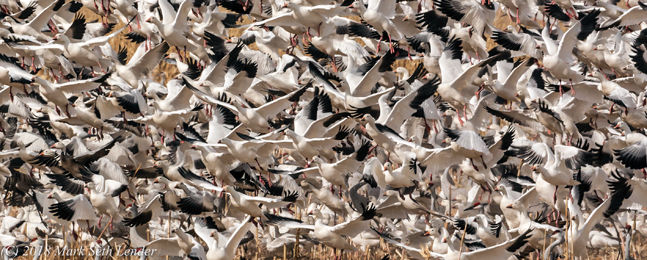
Mark Seth Lender
page 5 of 10
Arise!
(Snow Geese, Bosque del Apache, New Mexico)
When snow geese rise all at once on the morning flyout, they are the busiest airport in the world. With no tower, no air traffic controllers, how do they avoid collision? Look at the position of those wings. All up. In the next frame, they were all down. The geese have to be fully coordinated and fast in their adjustments to avoid broken bones. The naked eye could never have detected this. This is why the camera is my writer’s notebook.
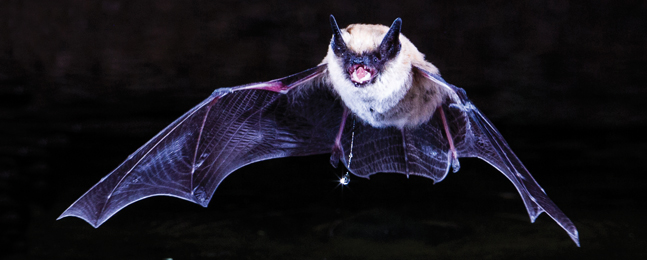
Mark Seth Lender
page 6 of 10
Bat Drinking in Flight
(Myotis occultus, Arizona)
Bats in the desert need water, and water is hard to find. Humans — or rather the ponds and pools we create for our own purposes — are a help. Bats find our watering holes. Word spreads. At night, the bats come.
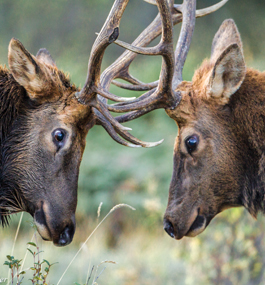
Mark Seth Lender
page 7 of 10
The Pugilists
(Elk, Jasper National Park, Canada)
These elk are too young to be in serious competition. They’re more sparring partners than contestants. Like the padding in a 16-ounce Everlast glove, an antler’s design lessens the chances of harm. When elk crash together, their antlers interdigitate, and their eyes are protected. Losing an eye is a death sentence for any animal in the wild.
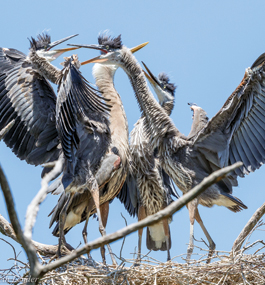
Mark Seth Lender
page 8 of 10
Cain and Abel Reach an Understanding
(Great Blue Herons, Connecticut River Valley)
Three of the great blue herons on this nest are siblings. In this frame, it looks like they are fighting a civil war. They aren’t. Later frames show that, in strike after strike, these young herons meticulously avoided one another’s eyes, drew no blood, did no harm. Except for the limited contact that was part of their stagy swordplay, they did not even touch. Animals in conflict, whether with each other or in confrontation with humans, preferentially exercise restraint.
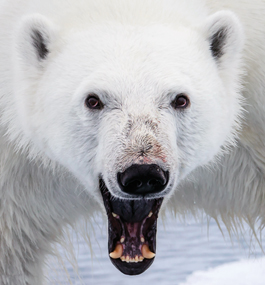
Mark Seth Lender
page 9 of 10
“I” Contact
(Polar Bear, 571 Miles From the North Pole)
She crossed the ice from a kilometer away, not out of hunger (she had just consumed an entire seal). Nor out of anger (polar bears are not angry). Nor even from curiosity. She was afraid. Every time the ship’s bilge pump detonated and water gushed, she jumped back and shied away. Finally, she stood up, up and up, 8 feet tall, paws draped in front of her. She made eye contact with every human being leaning on the ship’s rails. You could read the question in her mind, not “what,” but “who.” Who are you?
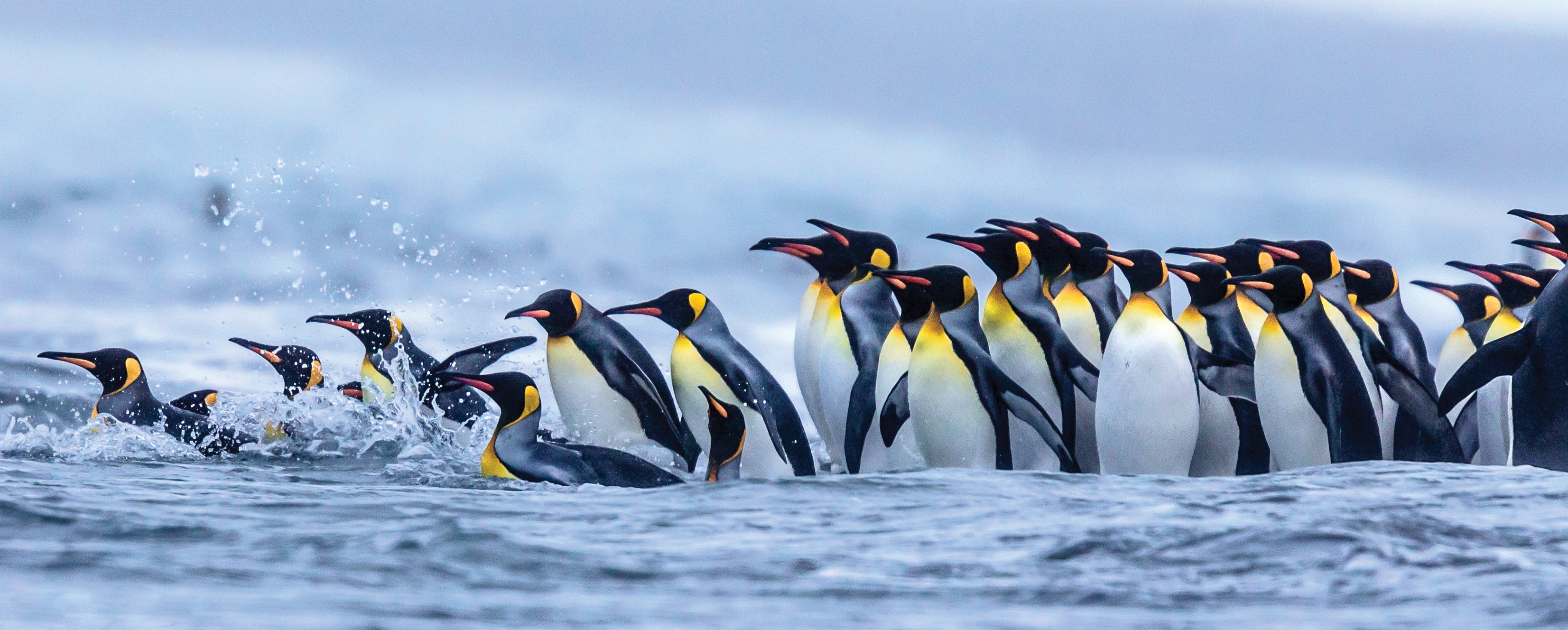
Mark Seth Lender
page 10 of 10
King Penguins Entering the Surf
(Salisbury Plain, South Georgia Island)
In the Antarctic, the ocean is a toothy place. So when king penguins enter the ocean, it is life or death. Like soldiers, they form a single file to present the narrowest target to whatever lurks beneath. No one wants to go first. No one would go at all except that hunger compels them. They walk toward the water and wait, and let the waves come to them. Then, leaning into the concealing foam, they forge ahead.
